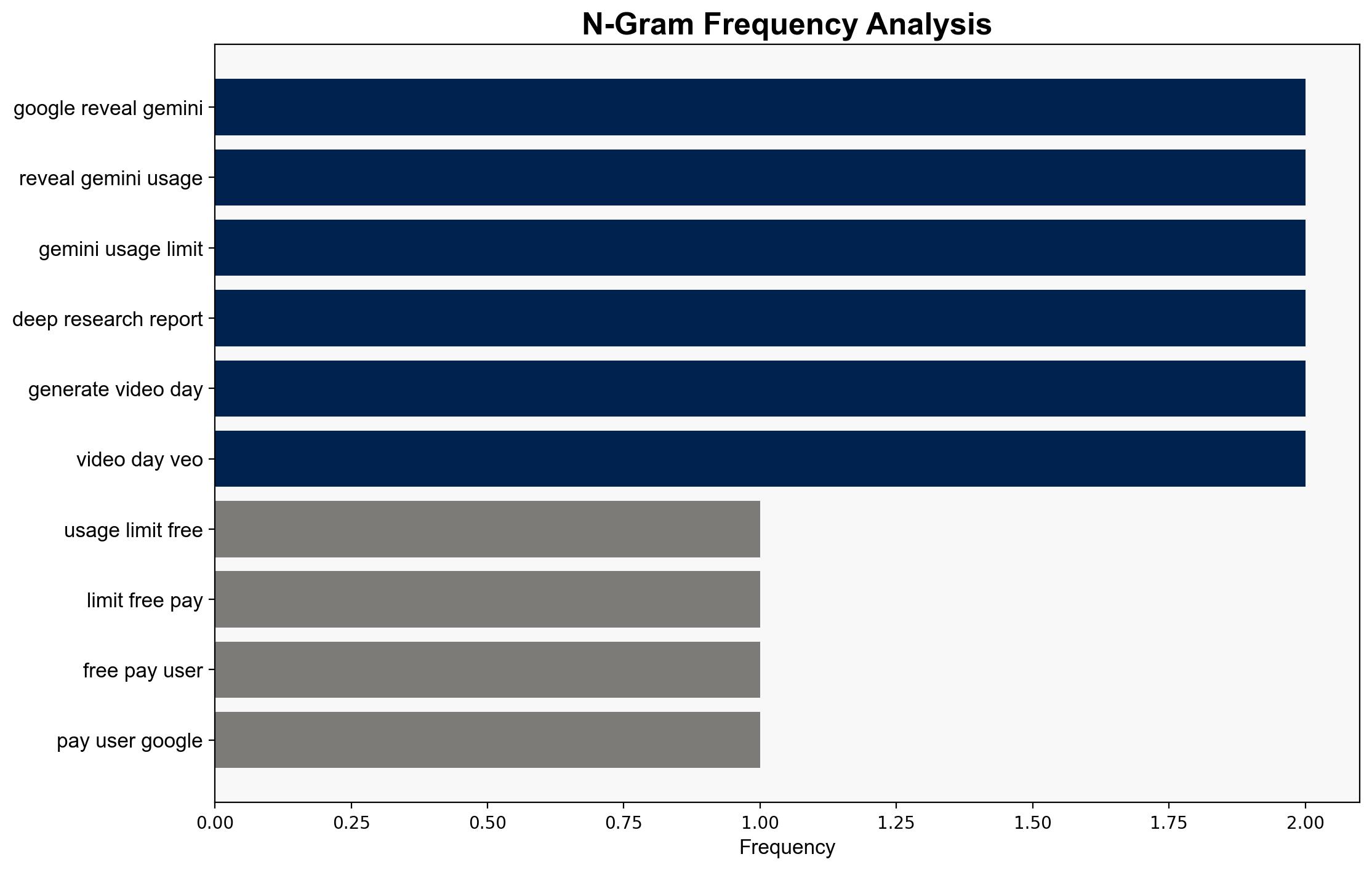Google reveals Gemini usage limits for free and paid users – Ghacks Technology News
Published on: 2025-09-09
Intelligence Report: Google reveals Gemini usage limits for free and paid users – Ghacks Technology News
1. BLUF (Bottom Line Up Front)
The strategic judgment is that Google’s tiered usage limits for its Gemini AI service are primarily designed to manage operational costs and optimize resource allocation. The most supported hypothesis is that these limits are a strategic move to balance user demand with infrastructure capabilities. Confidence level is moderate due to limited data on regional differences and user behavior. Recommended action is to monitor user feedback and regional updates to assess the impact on user satisfaction and competitive positioning.
2. Competing Hypotheses
1. **Hypothesis A**: Google’s usage limits are primarily a cost-management strategy to ensure sustainable AI operations and profitability.
– **Supporting Evidence**: The structured pricing tiers and usage limits align with cost-control measures typical in technology services.
– **SAT Applied**: Cross-Impact Simulation suggests that cost management is a primary driver, given the high operational costs of AI technologies.
2. **Hypothesis B**: The usage limits are a strategic move to create artificial scarcity, driving users towards higher-tier subscriptions.
– **Supporting Evidence**: The differentiation in features and access between free and paid tiers could incentivize upgrades.
– **SAT Applied**: Bayesian Scenario Modeling indicates a moderate probability that scarcity tactics are used to boost revenue.
3. Key Assumptions and Red Flags
– **Assumptions**: It is assumed that Google’s infrastructure costs are significant enough to necessitate strict usage limits. Another assumption is that user behavior will be influenced by these limits.
– **Red Flags**: Lack of detailed regional data on usage limits and potential discrepancies in user experience across different geographies.
– **Blind Spots**: The potential impact of competitor actions, such as Microsoft’s Copilot, is not fully explored.
4. Implications and Strategic Risks
– **Economic**: Usage limits could impact user satisfaction and retention, affecting Google’s market share in AI services.
– **Cyber**: Increased demand for AI services may lead to heightened cybersecurity risks as more data is processed and stored.
– **Geopolitical**: Regional variations in service access could lead to dissatisfaction in certain markets, impacting Google’s global reputation.
– **Psychological**: User perception of value and fairness could be negatively impacted by perceived artificial scarcity.
5. Recommendations and Outlook
- Monitor competitor responses and adjust pricing strategies to maintain competitive advantage.
- Enhance transparency in regional usage limits to improve user trust and satisfaction.
- Scenario Projections:
- Best Case: Users adapt positively to limits, leading to increased subscription revenue.
- Worst Case: User backlash leads to decreased market share and negative brand perception.
- Most Likely: Gradual adaptation with moderate subscription growth and stable user base.
6. Key Individuals and Entities
– Google
– Microsoft (as a competitor with its Copilot service)
7. Thematic Tags
technology strategy, AI service management, market competition, user behavior analysis




